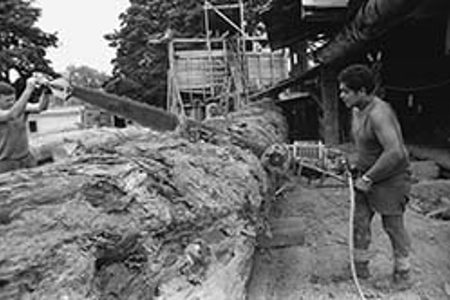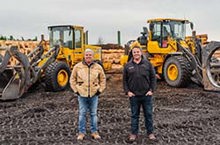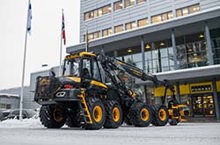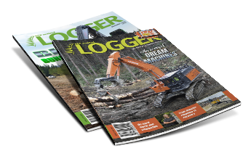
Clear felling of native forests had officially ceased by 1977 because the Government had realised during the 1950s that this valuable resource was rapidly being depleted and action was necessary to preserve what remained, says historian Ron Cooke.
He adds that In hindsight he was fortunate or, to be more accurate, unknowingly on hand, to record the dying stages of an industry whose fate had already been decided.
The date of his visit to Edhouse’s Mill was on Wednesday 22 November 1972 about 18 months before it burnt down on 1 May 1974 and, as a result, sadly ceased operations.
In our Looking Back feature this month, we highlight a pictorial of the mill taken by Ron all those years ago.
Pictured here: The native logs that arrived at Edhouse’s mill from the bush skids needed to be suitably cut in half lengthwise to comfortably fit on their breaking-down bench. Tuppy Woods (right) handles the two-man electric-powered chainsaw with the assistance of Len Ralph who steadily adds his special skill to the cutting process. George Oliphant, a retired timber worker of Taumarunui, easily recognised the manufacturer of this unusual saw and described it as a Danarm being similar to an “extremely heavy beast” he used to operate at the neighbouring Hutt Timber & Hardware of Manunui with Max Adler.
“It was impossible to carry on your own but it was very powerful with a heavy-duty chain with big links.” George went on to explain that lubricating oil was held in a small tank built into the tail end handle. The chain also ran over a nose sprocket which improved efficiency and wear. Having availability of three-phase electric power, along with an extension lead, was ideal for working on the skids in relative silence and well before the greenhouse effect was even heard of.
To read more, get your copy of the June 2024 edition of NZ Logger magazine, on sale from 3 June. Check the link on this page to subscribe to either a printed or digital copy (or both).










